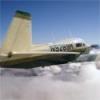Question on high DA leaning for take off
-
Members Online
- TCC
- IvanP
- dzeleski
- M20F
- DXB
- Shiroyuki
- EricJ
- GeeBee
- DonMuncy
- georgewdean1020
- sandeepdutta
- 201Mooniac
- dennis riz
- Sabremech
- AustinS
- FlyboyKC
- eman1200
- jlunseth
- Robert C.
- Meshach
- PierreL
- ohdub
- PMcClure
- 47U
- exM20K
- C.J.
- Marc_B
- rbmaze
- sw1024
- alextstone
- 1980Mooney
- raymondscott0321
- NickG
- toto
- hammdo
- bigmo
- BillyT0020
- SKI
- Jetdriver
- Flyler


Recommended Posts
Join the conversation
You can post now and register later. If you have an account, sign in now to post with your account.